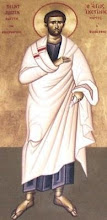I have a particular fondness for old churches as many of them are hidden and largely forgotten about in our English countryside. This can be such a shame when there are so many hidden beauties stooped in English heritage just waiting to be found.
Out of pour necessity on my tour I decided to stay more urban in my search for English heritage as I do not drive and have to rely on public transport or my two feet and heart beat (i.e. walking) if I want to get anywhere.
Thursdays stop was St Andrew’s Church in Rugby.
 The first chapel on this site is believed to have dated 1140 however the parish of Rugby was not created until 1291 at which time it was also dedicated to St Andrew. The present church is mainly Victorian, the Nave and Chancel dating from 1879.
The first chapel on this site is believed to have dated 1140 however the parish of Rugby was not created until 1291 at which time it was also dedicated to St Andrew. The present church is mainly Victorian, the Nave and Chancel dating from 1879.
It was designed by William Butterfield and has all the hallmarks of his designs – use of coloured stone, patterned floor tiles and coloured ceiling. It is a unique, in being the only church in the world that has two sets of bells hung for full circle ringing.
West Tower and North Aisle (14th Century)
The tower walls are 3.5ft thick and it is home to one of the two sets of bells. Five bells dated from 1711 and weighing 9.5cwt and rung for Sunday services. The north aisle formed the nave in the original 14th century church.
Clergy Vestry and East Tower (1895)
The spire is 182ft high and houses the second ring of eight bells weighing 24cwt and rung regularly for practice and for special occasions.
The Lady Chapel and Sanctuary (1879)
The Lady Chapel is set aside for private prayer. The east window above the high altar depicts Christ in Glory and the reredos is Alec Miller’s painting adapted from Fra Angelico’s ‘The Transfiguration’.
 The Organ
The OrganOriginally in the church of Noton-by-Galby, Leicestershire and brought to St Andrew’s in 1792. it has seen several changes and additions creating a fine instrument with 48 stops.

I would have very much liked to have taken some more pictures but I am afraid the light on the day was very poor so instead I have managed to find this one from St Andrew's Church Website as an example of the interior.




No comments:
Post a Comment